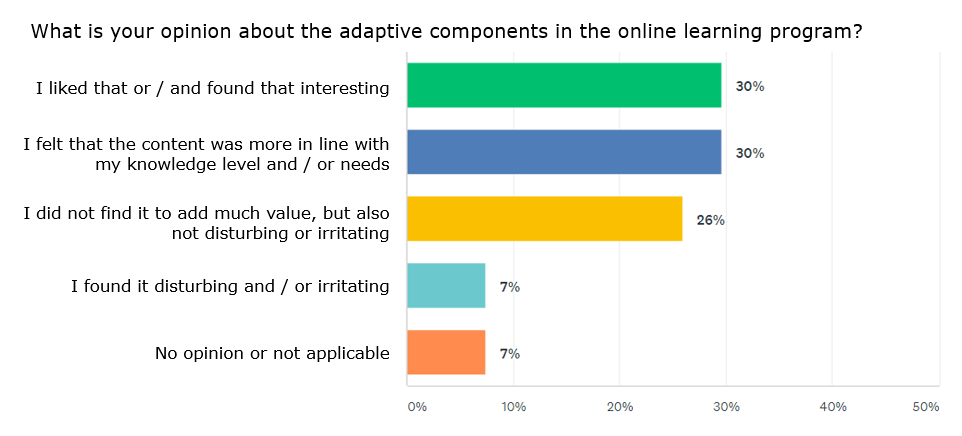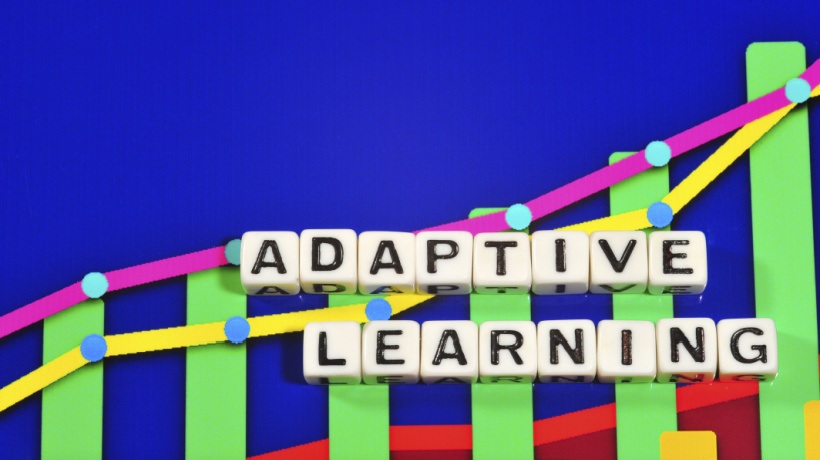Our Findings About Adaptivity In A Blended Course
As always, adaptive personalized learning is mentioned in every trend report as one of the biggest trends and it is wanted by the learner. However, it is not easily or quickly created and implemented. As a digital learning specialist, I would like to share our knowledge and tips from our experience with adaptivity in a blended course.
In our non-profit organization, we offer a free educational startup program for senior citizens, called Start-up Plus, a blended course of 8 weeks, combining face-to-face events with adaptive personalized online learning and the support of coaches. Piloting in 2019 in the Netherlands and Poland, the program will run in 2020 in 4 countries in Europe. Our target audience: 50plus-year-old learners with an idea for a business that are currently unemployed or in the workplace but want a second career, and retirees that wish to start their own business.
Each 50plus-year-old learner with tons of life and work experiences and diverse backgrounds receives a more personalized learning path aligned with their previous knowledge level, learning objectives, business idea, and skillset. Our team of Instructional Designers decided to offer adaptive learning in both online and offline ways.
First, Let's Talk A Bit About What Adaptive Learning Is
Adaptive learning is a way of making—massive—online or face-to-face courses tailored to smaller groups or even individual learners. The adaptivity is based on relevant, pre-determined characteristics of the learners.
Usually, this results in several learning trajectories in an educational program—tracks or personalized training—or an online learning platform. Relevant characteristics may be learning targets, level of knowledge, level of expertise or time available. In the case of online learning, the learner can be tested on these characteristics upon which certain online learning elements are shown—or not shown.
And right away, the benefits for learners become clear: adaptive learning is used to guide learners through the subject matter faster. This saves time. Only content that fits the learners' needs will be provided. The learners can skip content that they already master. And that makes them feel that the time spent on learning is useful and the learning content fits their personal needs.
Other Opportunities And Strengths Of Adaptivity
- Adaptive learning can be adjusted to where it adds value for the learner and is therewith flexible.
- The non-linear approach of adaptivity makes the performance level of learners visible. This could be a performance indicator for teachers and organizations. Or it could even predict the performance of learners with a similar profile.
- Adaptivity could lead to higher engagement and enthusiasm among learners if used as variation and in combination with other learning formats such as classroom, online discussions, projects, group work.
- To test and score on a learning objective, adaptive learning paths can prevent an overload of irrelevant content.
- Adaptive learning can facilitate and simplify self-assessments.
- If done correctly, the adaptive learning path takes into account the increasingly better learning performance (mastery learning).
- The combination of adaptive learning technology and guidance and support of teachers can contribute to a powerful learning experience that enables learners to learn at their own pace and at their highest level.
Designing The Learning Journey
When creating learning journeys based on learning objectives and fitting learning strategies, the Bloom taxonomy could be helpful in your creation. Online adaptive elements are particularly useful and suitable for reproductive learning objectives (remember).

Adaptive learning paths are mostly used and most suitable for largely reproductive learning goals such as is often the case for language and mathematics.
The highest-level learning objectives (analyze, evaluate, create) are difficult to assess online; offline adaptivity may be more suitable.
We experimented in our blended course with offline adaptive elements. For example, conversational intakes with learners can be useful in helping to understand or apply, with which the teacher or coach can offer a more personalized learning experience. An intake could also help in matching individual coaches to individual learners based on, for instance, learning targets or learning preferences and the skillset of coaches. Or to support peer-learning by matching on, for instance, background knowledge, learning preferences or personal characteristics such as geographical location or age.
To create adaptive learning paths often a deep knowledge of didactics and Instructional Design is needed and it can be challenging and time-consuming. Depending on the format in adaptivity, you either have to create numerous variations of content options or you need to be creative in test options (quizzes) connecting them to relevant content.
Other Weaknesses Of Adaptivity
- Too many quizzes, tests, and assessments could feel too academic and not playfull or encouraging.
- Learners could feel lonely in an online-only and adaptive-only platform.
- The paths the learner takes could lead to overjumping important learning content and relations to problem-solving and individual needs—they go left and miss out on the right.
- Adaptive is not always suitable for explaining the meaning of the learning material to learners in terms of relevance of the learning materials with different contexts, for example in relation to current events or personal experiences.
- If teachers use the output data of adaptive paths to determine the need for individual support, it is of great importance that teachers underline the meaning of adaptive learning and can deal with technology. For example, what is the reason for a dropout? Is that due to understanding the question or content or is there another reason?
- Design and development of adaptive learning paths must be done very accurately—errors are easily made due to complexity in creating adaptivity, tests, and content serving.
- The complexity of supporting different learning styles (auditive, visual, etc.) in the creation of adaptivity has to be taken into account and can be rather difficult or time-consuming.
- Endless adaptivity or full personalization, on the one hand, is difficult to achieve and, on the other hand, limited adaptivity may not be enough or may lead to insecurity among learners.
In our course, we choose to create both online and offline adaptive learning components. Through an online intake survey with questions on their background, their wishes to learn on various topics, and their business idea, we matched each learner to a personal business coach. Throughout the course of 12 weeks, they talked or skyped each week to adapt their support to the learners' needs.
The online adaptive components were quizzes on their knowledge of entrepreneurial topics like lean startup methodology, business modeling, and design thinking. Each quiz contained 5 questions. Each of the 5 questions had a weight and at 70% or more correct answers, the learner passes the test. We connected the outcome of the questions to the theory content items which are hidden on the front end for the learner. Based upon quiz results, these items would fall open for the learner if they failed the test. Or they would be closed and hidden if the learner passed the test and had enough knowledge on the topics to continue with other content in the course. Learners could check their test results, go back to incorrect answers, and read more on the specific topic. We also provided feedback and invited learners who successfully completed the quiz to go back to the content if they wished—to reduce insecurity or the fear of missing out.
How did the participants of our course evaluate the online adaptive learning paths? Half of our group of learners filled in our evaluation survey (N=27) and gave their opinion on the adaptive components in the online learning program, the quizzes on different subject matters.

Our Tips And Tricks
To conclude, adaptive learning can be very powerful in supporting learners but requires quite extensive preparation and cost-benefits should be carefully considered. If you decide to go for it, our tips might be helpful:
- Take your time in creation; it must be done accurately and tested before publication.
- Consider where adaptivity would be conducive for the learning experience and then choose the fitting mode of delivery.
- Vary in online and offline different formats of content items and support (video, text, discussions, assessments, experiments, coaching, interaction with peers, etc.).
- Vary in formats of assessments to prevent the learner from getting bored or guessing: multiple choice, drag-and-drop, matrix, multiple select, etc.
- Write in a tone of voice suitable for your audience.
- Indicate the time to spend and the benefits for the learner in taking an assessment.
And last but not least, evaluate if you can the experiences of learners and the achievement of learning objectives, completion, drop-out rates, and their reasons.










